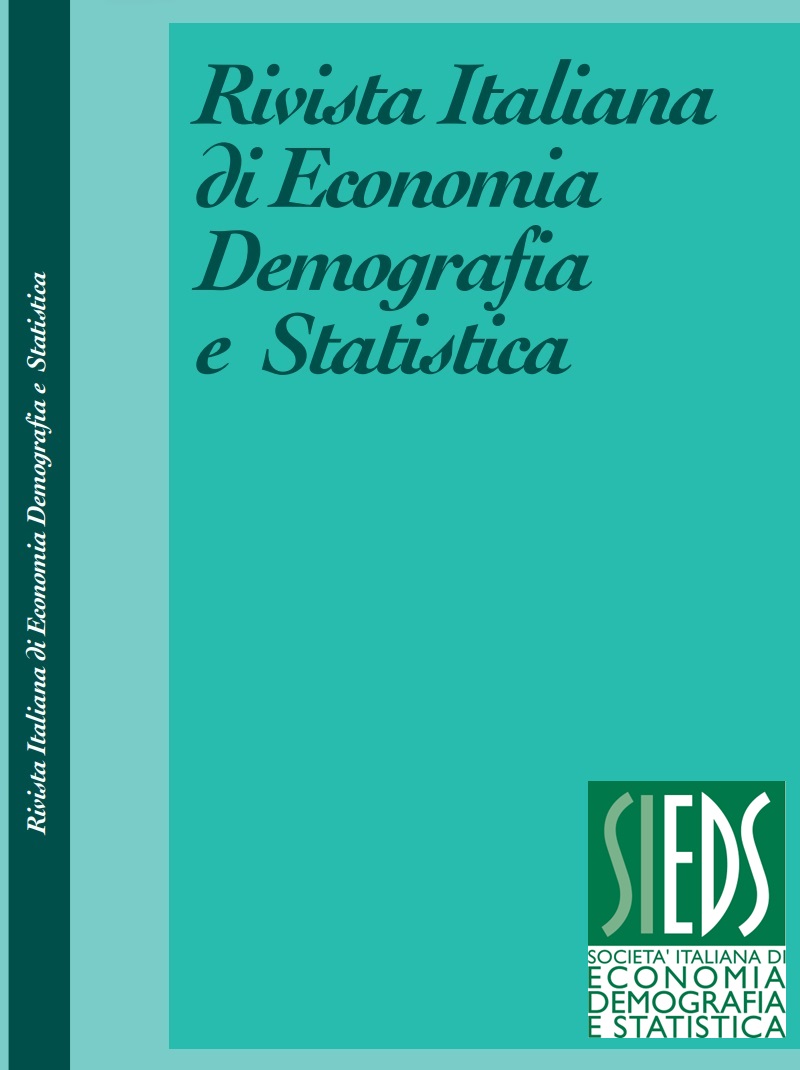Territorial aggregation of medium size cities and their gravitational territory for effective cohesion policies
DOI:
https://doi.org/10.71014/sieds.v78i3.402Abstract
The Unitary Cohesion Policy in the previous programming cycle (2014-2020) focused on Urban and Inner Areas, but in the current cycle (2021-2027), the approach has expanded to larger territories. This approach targets local development policies, encompassing metropolitan and medium-sized urban areas, inner areas, and other intermediate territorial systems based on internal functional connections. However, the lack of a clear definition for "intermediate" territories makes it challenging for statistics to identify suitable areas for public intervention. Consequently, some territories characterized by economic, cultural, and social centres with significant demographic decline and rapid aging may lack adequate public policies. The Regional Programme ERDF in Sicily for 2021-2027 has been designed to be geographically structured in a way that best addresses the needs and challenges expressed by the entire Sicilian territory. This includes the goal of countering demographic decline and population aging.
To plan and implement effective public policies aligned with the cohesion objectives for 2021-2027, the first step is to define territorial systems based on strict criteria of functionality and internal homogeneity. In this context, a new representation of the Sicilian territory has been developed. It involves dividing the regional territory into "urban" areas (Functional Urban Areas-FUA) and "non-urban" areas (Inner Areas-AI) based on established criteria (OCSE/Eurostat, SNAI). Given the absence of a clear definition for "medium-sized cities" and their associated territories, the authors have identified Urban Rank Inter-Municipal Systems (SIRU) as territories sharing similar characteristics that can contribute to regional-level impacts through place-based strategies. This method involves considering commuting flows of Local Labour Systems (SLL) and local services to identify territories characterized by shared anthropic pressure factors and underutilized resources and attractors. The method yielded the following outcomes, as the selection of a group of medium-sized cities based on demographic and territorial dimensions, functions, and services for a wider area, and past cooperation for local development, the identification of other municipalities with similar specializations and urban criticalities and the framing of inter-municipal systems of urban rank in the "Area Vasta (large)" including a network of poles of attractiveness and relevant functional connections to enhance potentials through infrastructure interventions and standards of services provided by the FESR intervention.
References
ANCI-IFEL. 2013. L'Italia delle città medie. In i Comuni – Quaderni di analisi from Centro Documentazione e Studi Comuni Italiani
CONSIGLIO ITALIANO PER LE SCIENZE SOCIALI. 2011. Società e territori da ricomporre Libro bianco sul governo delle città italiane
DE DONNO M, TUBERTINI C. 2020. Frammentazione comunale e contrasto allo spopolamento. In Istituzioni e Federalismo
FORMEZ. 2021. Dossier regionale -Regione Autonoma Sicilia, programmazione 2021-2027
ISTAT. 2020. Rapporto sul territorio 2020 - Ambiente, Economia e Società.
REGOLAMENTO DISPOSIZIONI COMUNI (RDC) UE 1060 del 2021 e Regolamento UE FESR1058 del 2021
THE EUROPEAN COMMISSION, UNITED NATIONS HUMAN SETTLEMENTS PROGRAMME. 2021. OECD Regional Development Studies Applying the Degree of Urbanisation A Methodological Manual to Define Cities, Towns and Rural Areas for International Comparisons: A Methodological Manual to Define Cities, Towns and Rural Areas for International Comparisons. OECD Publishing.
Downloads
Published
Issue
Section
License
Copyright (c) 2024 Pietro Barbera, Alberto Dolce, Rosario Milazzo, Ornella Pucci

This work is licensed under a Creative Commons Attribution 4.0 International License.



